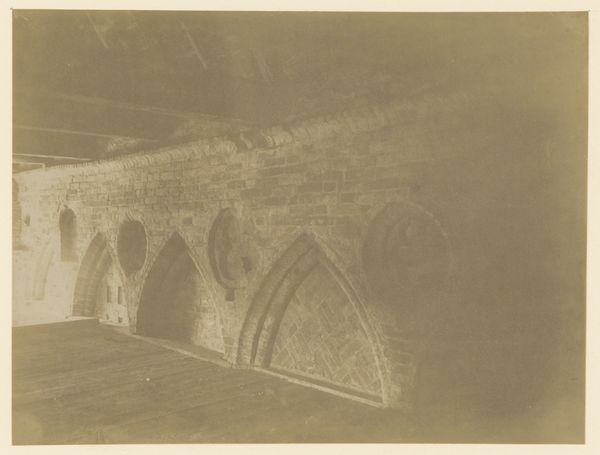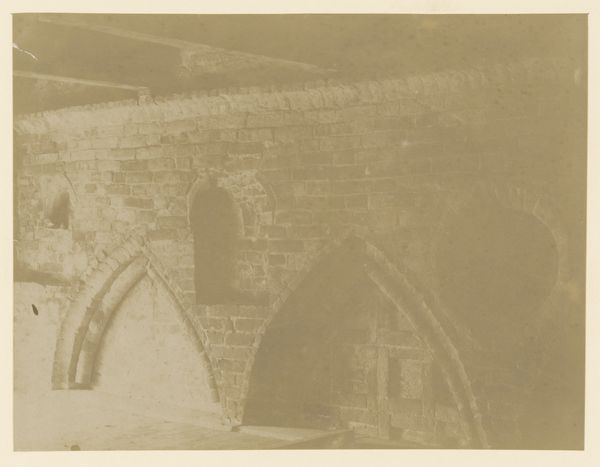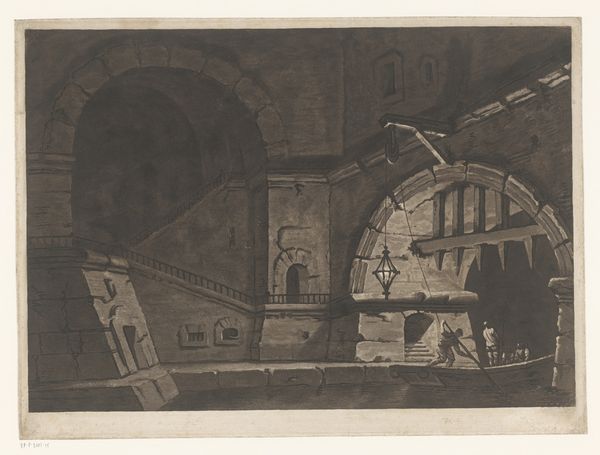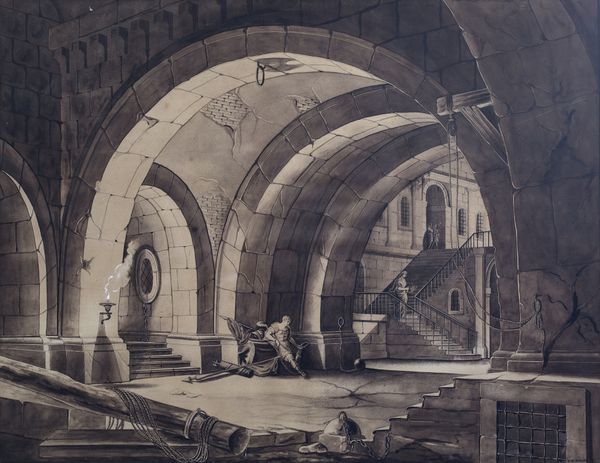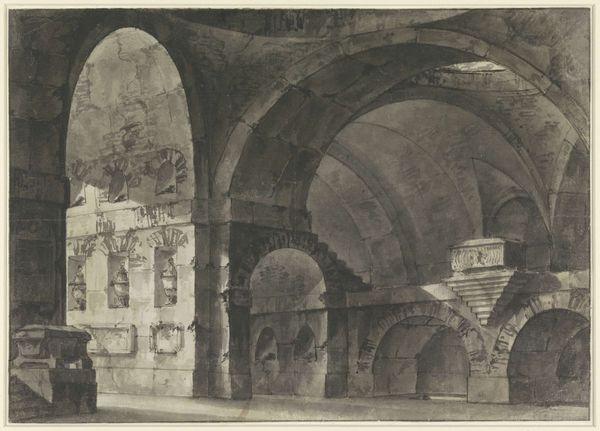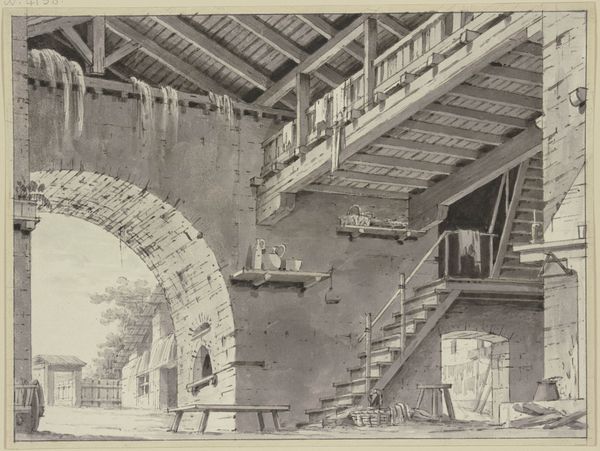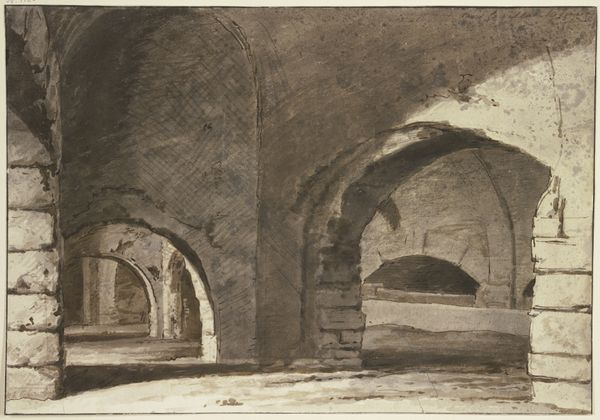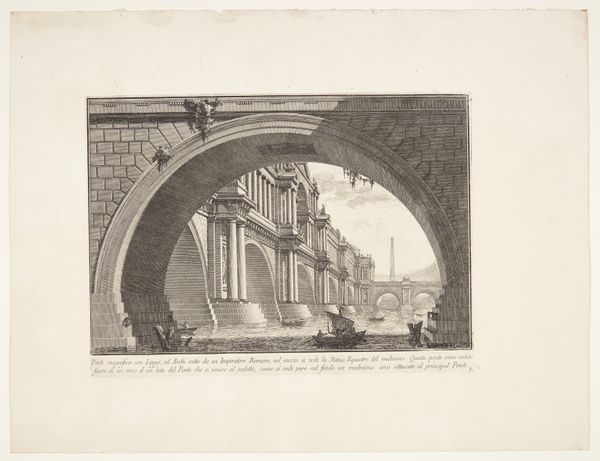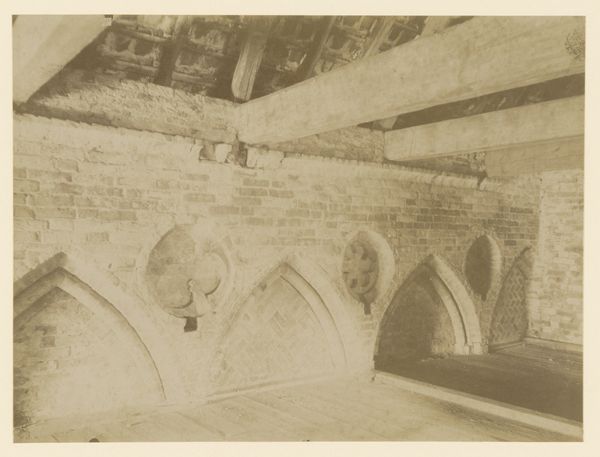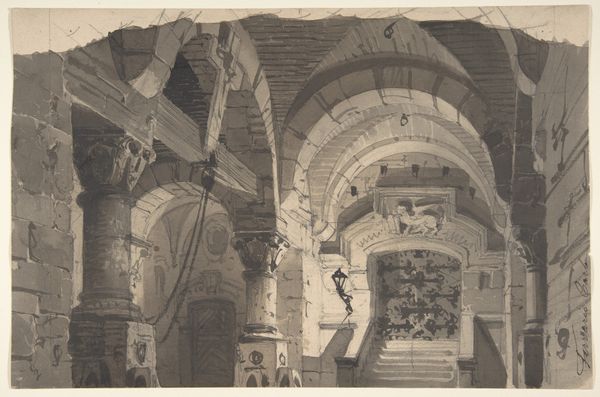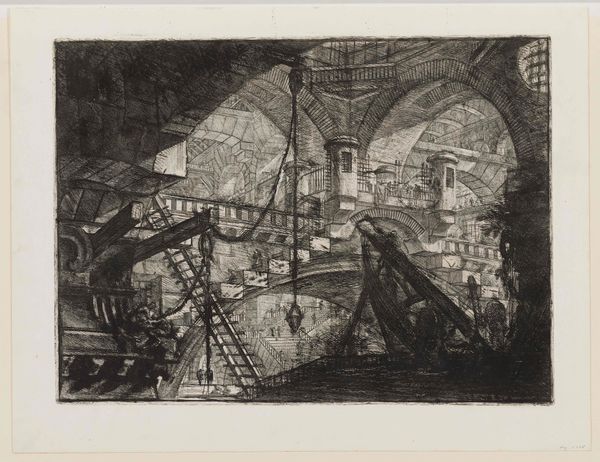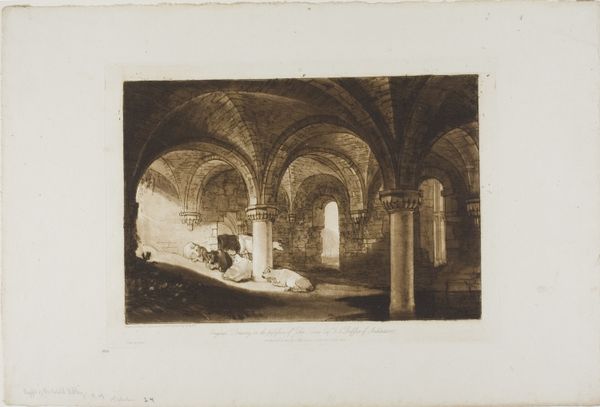
Paris, cathédrale Notre-Dame, les arcs-boutants 1849 - 1853
0:00
0:00
Dimensions: Image: 6 3/4 × 8 11/16 in. (17.2 × 22 cm) Mount: 11 15/16 × 16 3/8 in. (30.3 × 41.6 cm)
Copyright: Public Domain
This photograph of the Notre-Dame cathedral's flying buttresses in Paris was made by Henri-Jean-Louis Le Secq, a mid-nineteenth century artist. The image was printed using the calotype process, an early photographic technique involving paper coated with silver iodide. The calotype lends the scene a soft, almost dreamlike quality, yet the subject matter is robust architecture. Le Secq masterfully captures the stone buttresses, emphasizing their texture, weight, and structural form. These massive supports, essential to the cathedral's Gothic design, become almost lace-like through the camera's lens. Photography in this period was a relatively new medium, often used to document architecture and urban landscapes. It was a kind of industrial exercise - the making of light sensitive paper - used to capture the fruits of human labor, like this cathedral. The image invites us to consider not only the cathedral's grandeur, but also the materials and the immense effort required for its construction. It makes you think about the relationship between human endeavor, artistic representation, and the very fabric of our built environment.
Comments
No comments
Be the first to comment and join the conversation on the ultimate creative platform.
